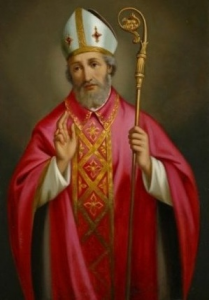 Saint Anselm
Saint Anselm
Archbishop of Canterbury (1034-1109)
Feast – April 21
Pope Sergius III, an unscrupulous character lead the Church during a period in the history of the Papacy called the Saeculum Obscurum (the Dark Age). It was a time of violence and disorder in central Italy (also known as the Rule of the Harlots), beginning in 904 and lasting for sixty years until the death of Pope John XII in 964.
During this period, the popes were influenced by powerful and corrupt aristocratic families; relatives and allies would use the resources of the papacy at their behest. The era is seen as one of the lowest points in the history of the Papal office, but the trouble didn’t end in 964. In October 1032 the nephew of Pope John XIX, a son of Count Alberic III of Tusculum, became the youngest pope in history, Pope Benedict IX. This is the only individual to have been Pope on more than one occasion and the only one ever to have sold the papacy. Benedict’s father obtained his election through bribery. Pope Benedict IX’s reputed dissolute activities provoked a revolt on the part of the Romans. Benedict was driven out of Rome and Sylvester III was elected to succeed him. Some months later, Benedict and his supporters managed to expel Sylvester. Benedict then decided to resign in favor of his godfather, Gregory VI, provided he was reimbursed for his expenses. Benedict subsequently had second thoughts, returned and attempted to depose Gregory VI. A number of prominent clergymen appealed to King Henry III, the Pious, of Germany (the Holy Roman Emperor between 1046 and 1056) to restore order. Pope Clement II became the ruler of the Papal States on the 25th of December, 1046 until his death on the 9th of October, 1047. He was the first of the reform-minded popes of 11th century. Then Benedict IX was back for 252 days until he was deposed and excommunicated, followed by the 23 day reign of Pope Damasus II. On the 12th of February, 1049, Bruno von Egisheim-Dagsburg became Pope Leo IX. His term ended in 1054, shortly after the mutual excommunications of Leo IX and Patriarch of Constantinople Michael I Cerularius which led to the East–West Schism (revoked by Pope Paul VI and Patriarch Athenagoras in 1965). Then followed the 2 year, 106 day papacy of Pope Victor II followed by 239 days of Pope Stephen IX, 295 days of Pope Benedict X’s in opposition to Nicholas II, and then the 10 year, 185 day papacy of Pope Honorius II in opposition to Pope Alexander II.
After one hundred sixty-nine years, on the 22nd of April, 1073, St. Gregory VII – the great reformer, become Pope. To prevent the Church from slipping back into the abuses that had occurred in Rome, during the Rule of the Harlots and to reassert its importance and authority to its followers he formed a group in the papal curia, which dealt with the moral integrity and independence of the clergy, which initiated a sequence of reforms, named the Gregorian Reforms in veneration of Pope Gregory I. The reforms were a return to the old ways, rigorously enforcing the Western Church’s ancient policy of celibacy for the clergy and forbidding the practice of simony.
Over time, before the Gregorian Reforms, the Church had become a heavily decentralized institution, in which the Pope held little power outside of his position as Bishop of Rome and held almost no authority over other bishops, who were invested with land by lay rulers. Reforms established that the Pope is elected by the College of Cardinals and affirmed the primacy of the Pope’s authority over the Church. St. Gregory VII’s ban on lay investiture was a key element of the reforms contributing to the centralized papacy of the later Middle Ages. This struggle between Church and civil authority over the right to install bishops and abbots of monasteries was named “Investiture Contest” or “Investiture Controversy.”
William II, the third son of King William the Conqueror, King of England, with powers over Normandy and influence in Scotland from the 26th of September, 1087, until his death in 1100 was one of the opponents of Gregorian Reforms. Less than two years after becoming king, his father’s adviser and confidant, the Archbishop of Canterbury, Lanfranc of Pavia died. After Lanfranc’s death in 1089, Rufus began his repression and almost a systematic looting of the English Church. He left abbacies and bishoprics vacant and collected their revenues for the royal treasury, leaving the monks barely enough to live on. Indeed, he even dispersed some of the monks from the abbeys lacking abbots. Most grievous of all was his exploitation of Canterbury during its vacancy, and Rufus’s refusal to appoint a new archbishop for four years. It was only in the midst of a serious illness, when he thought he was on his deathbed, that the king appointed St. Anselm of Bec to the archbishopric of Canterbury.
St. Anselm, the greatest theologian of his generation and a Doctor of the Church was born in, or around Aosta in Upper Burgundy (modern Italy), in 1034. His father Gundulf was a Lombard noble, mother Ermenberga was almost certainly the granddaughter of Conrad the Peaceful, the King of Burgundy and was related to the Anselmid bishops of Aosta. His father is sometimes described as having a harsh and violent temper while at the same time being overgenerous and careless with his wealth. His patient and devoutly religious mother, made up for her husband’s fault with her own prudent management of the family estates.
At the age of fifteen, St. Anselm desired to enter a monastery but, failing to obtain his father’s consent was refused by the abbot. After the death of his mother his father repented his earlier lifestyle and had entered a convent. At age 23, St. Anselm left home and for three years studied in various schools in France.
At length his vocation revived. Attracted by the fame of his fellow countryman Lanfranc of Pavia, prior of the Benedictine abbey of Bec in Normandy, at the age of 27 he became a monk and began studying under the renowned Abbot. When in 1066 Lanfranc was called to be the Abbot of the Abbey of Saint-Étienne at Caen in Normandy, a monastery dedicated to Saint Stephen founded in 1063 by William the Conqueror, the monks of Bec elected St. Anselm prior. In 1078 following the death of Bec’s founder, Herluin, he was unanimously elected as abbot and consecrated by the bishop of Évreux on 22 February 1079. Under St. Anselm’s direction, Bec became the foremost seat of learning in Europe, attracting students from France, Italy, and elsewhere. During this time, he wrote the Monologion and Proslogion and composed a series of dialogues on the nature of truth, free will, and the fall of Satan. For his dialogues and treatises with a rational and philosophical approach, he is credited as the founder of Scholasticism. The fame of his sanctity in this cloister led King William Rufus of England, when dangerously ill, to summon St. Anselm to hear his confession and administer last rites. He published a proclamation releasing his captives, discharging his debts, and promising to henceforth govern according to the law. On the 6th of March, 1093, he further nominated Anselm to fill the vacancy at Canterbury.
King William was a figure of complex temperament, addicted to every kind of vice, particularly lust and possibly sodomy (he did not marry nor have children), was capable of both bellicosity and flamboyance, and when restored to health lapsed into his former sins, continuing to plunder the Church lands. He tried to extort a simoniacal payment from St. Anselm. St. Anselm not only refused, but he further pressed the king to fill England’s other vacant positions and permit bishops to meet freely in councils. Then he attempted to bribe Pope Urban II to hand Anselm’s pallium over to the king for conferral on the archbishop. The strife between St. Anselm, a strong supporter of the Gregorian reforms, and the king began. When he was consecrated Archbishop, he received the pallium in December 1093 not from the king’s hand but from the papal legate.
As archbishop, St. Anselm maintained his monastic ideals, including stewardship, prudence, proper instruction, prayer, and contemplation. His vision was of a Catholic Church with its own internal authority, which clashed with the king’s desire for royal control over both church and State. He continued to agitate for reform and the interests of Canterbury.
For St. Anselm’s defense of the Pope’s supremacy in a Council at Rockingham, called in March of 1095, the worldly prelates did not scruple to call him a traitor. The Saint rose, and with calm dignity exclaimed; If any man pretends that I violate my faith to my king because I will not reject the authority of the Holy See of Rome, let him stand, and in the name of God I will answer him as I ought. No one took up the challenge; and to the disappointment of the king, the barons sided with the Saint, for they respected his courage and saw that his cause was their own.
Aggrieved at William’s rule St. Anselm fled into exile and sought the help and advice of Pope Urban II in 1097. The Pope negotiated and the issue was supposedly resolved with William, but St. Anselm remained in exile. In his absence, William seized the revenues of the Archbishop of Canterbury vacant and claimed these funds until the end of his reign in 1100. While in exile, St Anselm helped guide the Greek bishops of southern Italy to adopt Roman rites at the Council of Bari, which also condemned William II of England, who had forced St. Anselm, the reforming archbishop of Canterbury, into exile.
After the accidental dead of William, his younger brother Henry I, also known as Henry Beauclerc, seized the English throne, promising at his coronation to correct many of William’s less popular policies. St. Anselm complying with the Pope’s wishes returned to England from exile in 1100. Henry was in a difficult position, on one hand, the symbolism and homage were important to him; on the other hand, he needed Anselm’s support in his struggle with his brother Duke Robert. In the beginning his ability to govern was intimately bound up with the Church. St. Anselm stuck firmly to the letter of the papal decree, despite Henry’s attempts to persuade him to give way in return for a vague assurance of a future royal compromise. Despite this argument, the pair worked closely together, combining to deal with Duke Robert’s invasion of 1101. In 1102, St. Anselm was finally able to convene a general church council at London, establishing the Gregorian Reform within England, but over time their relationship changed considerably. Emboldened by a successful invasion of Normandy, Henry supported St. Anselm’s reforms and his authority over the English Church, but continued to assert his own authority over St. Anselm. Matters escalated when Pope Paschal II excommunicated the bishops who had accepted investment from the king. St. Anselm received a letter forbidding his return and withdrew to Lyon to await the Pope’s response. On the 26th of March, 1105, Paschal again excommunicated prelates who had accepted investment from Henry and the advisors responsible, this time including Robert de Beaumont, Henry’s chief advisor and then finally threatened Henry with the same.
On St. Anselm’s behalf a meeting was arranged and a compromise concluded at L’Aigle on 22 July 1105. A distinction was drawn between the secular and ecclesiastical powers of the prelates, under which Henry would forsake lay investiture if Anselm obtained the Pope’s permission for clerics to do homage for their lands; Henry’s bishops’ and counselors’ excommunications were to be lifted provided they advise him to obey the papacy; the revenues of Canterbury would be returned to the archbishop; and priests would no longer be permitted to marry. On the 23rd of March, 1106, Pope Paschal wrote St. Anselm accepting the terms established at L’Aigle. Even after this, St. Anselm refused to return to England. Henry travelled to Bec and met with him on 15 August 1106. Henry was forced to make further concessions. He restored to Canterbury all the churches that had been seized by William or during Anselm’s exile, promising that nothing more would be taken from them and even providing Anselm with a security payment. These compromises on Henry’s part strengthened the rights of the church against the king and St. Anselm returned to England before the new year.
By the end of his life, he had proven successful, having freed Canterbury from submission to the English king, received papal recognition of the subservience of the wayward York and the Welsh bishops, and gained strong authority over the Irish bishops. He was the first to establish the Feast of the Immaculate Conception in the West.
Under his influence King Henry became a proponent of religious reform, gave extensively to reformist groups within the Church, donated money to the abbey at Cluny, and gave generously to the Reading Abbey, endowing it with rich lands and extensive privileges, making it a symbol of his dynastic lines; “for the salvation of my soul, and the souls of King William, my father, and of King William, my brother, and Queen Maud, my wife, and all my ancestors and successors.” He also focused effort on promoting the conversion of communities of clerks into Augustinian canons, the foundation of leper hospitals, expanding the provision of nunneries, and the charismatic orders of the Savigniacs and Tironensians.
St. Anselm died on Holy Wednesday, the 21st of April, 1109. He is recognized as the most luminous and penetrating intellect between St. Augustine and St. Thomas Aquinas and his works are considered philosophical as well as theological since they endeavor to render Christian tenets of faith, traditionally taken as a revealed truth, as a rational system.
References and Excerpts:
[1] “Pope Sergius III,” Wikipedia. Apr. 06, 2022. Accessed: Apr. 14, 2022. [Online]. Available: https://en.wikipedia.org/w/index.php?title=Pope_Sergius_III&oldid=1081283097
[2] “Saeculum obscurum,” Wikipedia. Feb. 22, 2022. Accessed: Apr. 14, 2022. [Online]. Available: https://en.wikipedia.org/w/index.php?title=Saeculum_obscurum&oldid=1073380139
[3] “Pope Benedict IX,” Wikipedia. Apr. 06, 2022. Accessed: Apr. 14, 2022. [Online]. Available: https://en.wikipedia.org/w/index.php?title=Pope_Benedict_IX&oldid=1081353856
[4] “Gregorian Reform,” Wikipedia. Mar. 23, 2022. Accessed: Apr. 14, 2022. [Online]. Available: https://en.wikipedia.org/w/index.php?title=Gregorian_Reform&oldid=1078751600
[5] “William II of England,” Wikipedia. Feb. 19, 2022. Accessed: Apr. 14, 2022. [Online]. Available: https://en.wikipedia.org/w/index.php?title=William_II_of_England&oldid=1072850874
[6] “Henry I of England,” Wikipedia. Mar. 27, 2022. Accessed: Apr. 14, 2022. [Online]. Available: https://en.wikipedia.org/w/index.php?title=Henry_I_of_England&oldid=1079495485
[7] “Saint Anselm, Archbishop of Canterbury.” https://sanctoral.com/en/saints/saint_anselm.html (accessed Apr. 14, 2022).
[8] “Anselm of Canterbury,” Wikipedia. Apr. 13, 2022. Accessed: Apr. 14, 2022. [Online]. Available: https://en.wikipedia.org/w/index.php?title=Anselm_of_Canterbury&oldid=1082410140
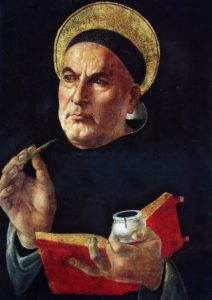 Saint Thomas Aquinas
Saint Thomas Aquinas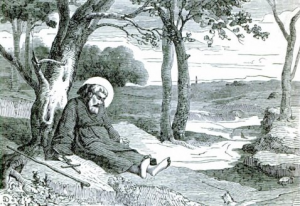 Saint Benedict of Anian
Saint Benedict of Anian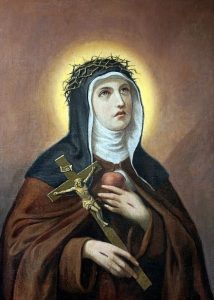 Saint Angela of Foligno
Saint Angela of Foligno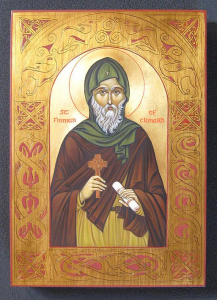 Saint Finnian
Saint Finnian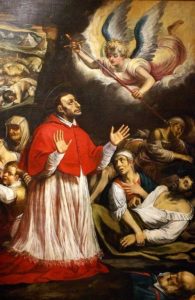 Saint Charles Borromeo
Saint Charles Borromeo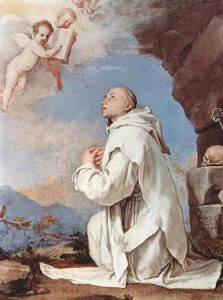 Saint Bruno
Saint Bruno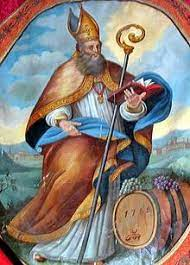 Saint Omer
Saint Omer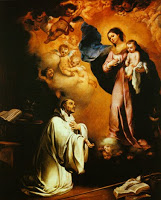 Saint Bernard
Saint Bernard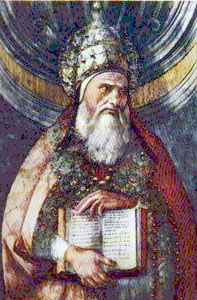 Saint Pius I
Saint Pius I